


Framed or unframed, desk size to sofa size, printed by us in Arizona and Alabama since 2007. Explore now.
Shorpy is funded by you. Patreon contributors get an ad-free experience.
Learn more.

- Side Winder
- Air Quality?
- Sojourner Truth riot
- None were so blind(ed)
- The less famous sister
- Good ol' days?
- Rise and Fall
- Goo Goo Ga Joob
- Ticket Retention
- Not the only one
- Vagaries of War
- Killed by Amtrak
- Back to the Future
- Wanted --
- If you can't stand the light
- Centralized Traffic Control, I believe
- What's really happening
- Heckuva remote control!
- Sometimes — Things Go Bump!
- I SEE THE LIGHT
- Union Switch and Signal Company
- Get That Light Out Of My Eyes
- Eggs. Eggs. Eggs. The Egg Man is Here!
- Foreboding caption
- Famous Hollywood faces
- Not just S&P
- re: Those things in the jar
- Up In Smoke
- Medical Smoking
- Quick fix
Print Emporium
Ice Age Cadillac: 1957
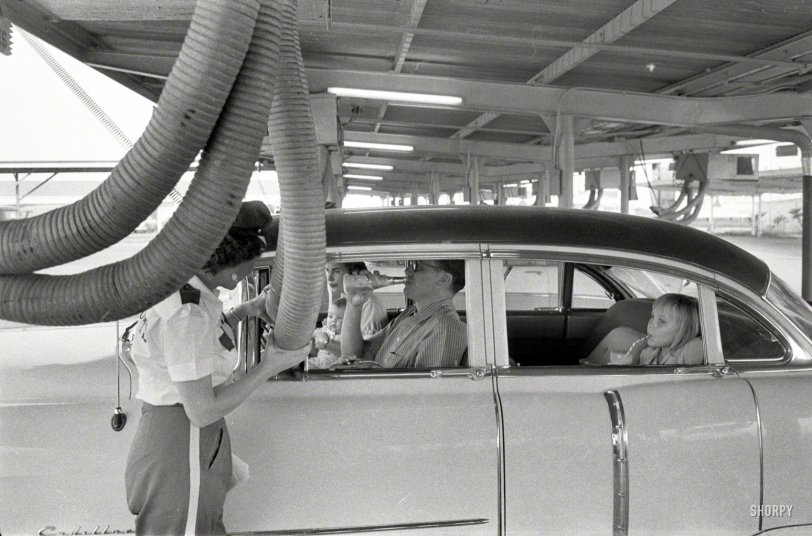
1957. "Robert and Norma Norton of Houston, Texas, with their family, illustrating life before and after having the house air-conditioned. Includes photos of the family at a drive-in restaurant having cool air piped into their car" -- a Cadillac sedan that already has air conditioning. Photo by Jim Hansen for the Look magazine article "How the Nortons Beat the Heat." View full size.
- 17 comments
- 21998 reads
Bedcast: 1922
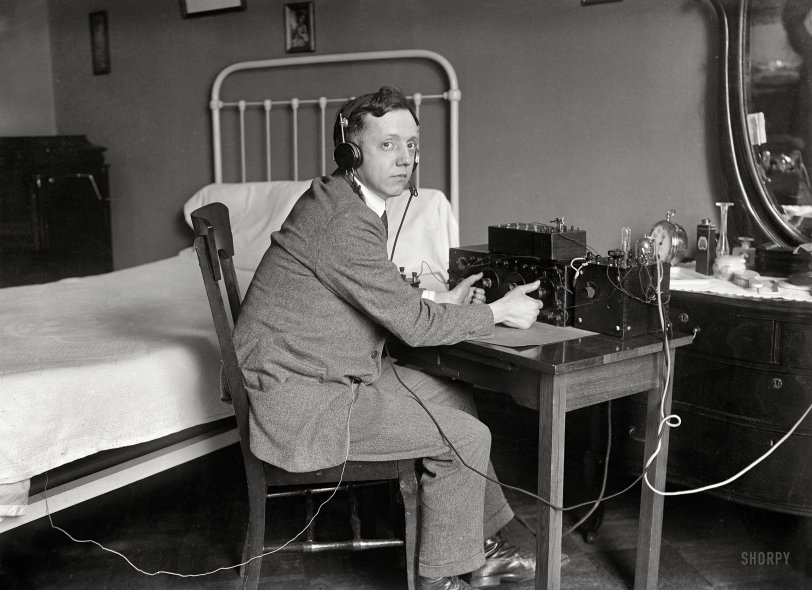
March 31, 1922. "H.G. Corcoran of Washington, D.C., needs an aerial for his radio outfit. His receiving wire is connected to the wire springs of his bed, which take the place of an aerial." Harris & Ewing Collection glass negative. View full size.
- 6 comments
- 7536 reads
The Twiddler: 1924
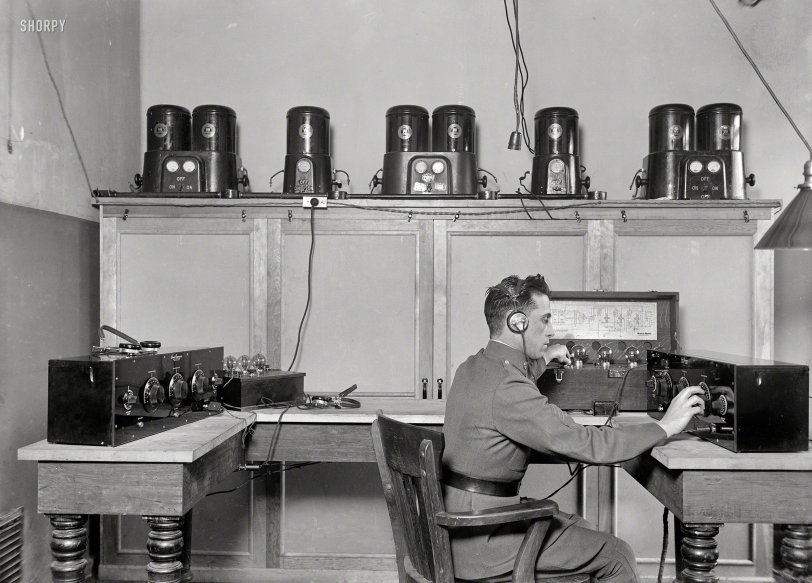
Washington, D.C., 1924. Tweaking the dials on a Freed Eisemann Neutrodyne receiver and a Western Electric 138 amplifier. On the shelf: Westinghouse "Rectigon" battery chargers. Harris & Ewing glass negative. View full size.
- 9 comments
- 10867 reads
The Stamp Mill: 1906
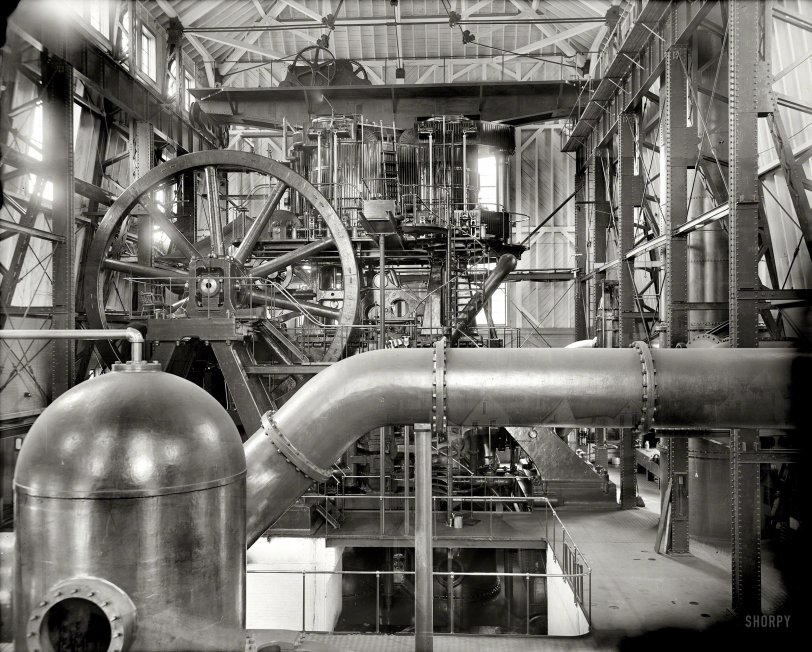
Copper production circa 1906. "12,000 horsepower compound pump, Calumet and Hecla stamp mill, Lake Linden, Michigan." Note the faint double exposure in this 8x10 inch glass plate. Detroit Publishing Company. View full size.
- 7 comments
- 14750 reads
Linked In: 1924
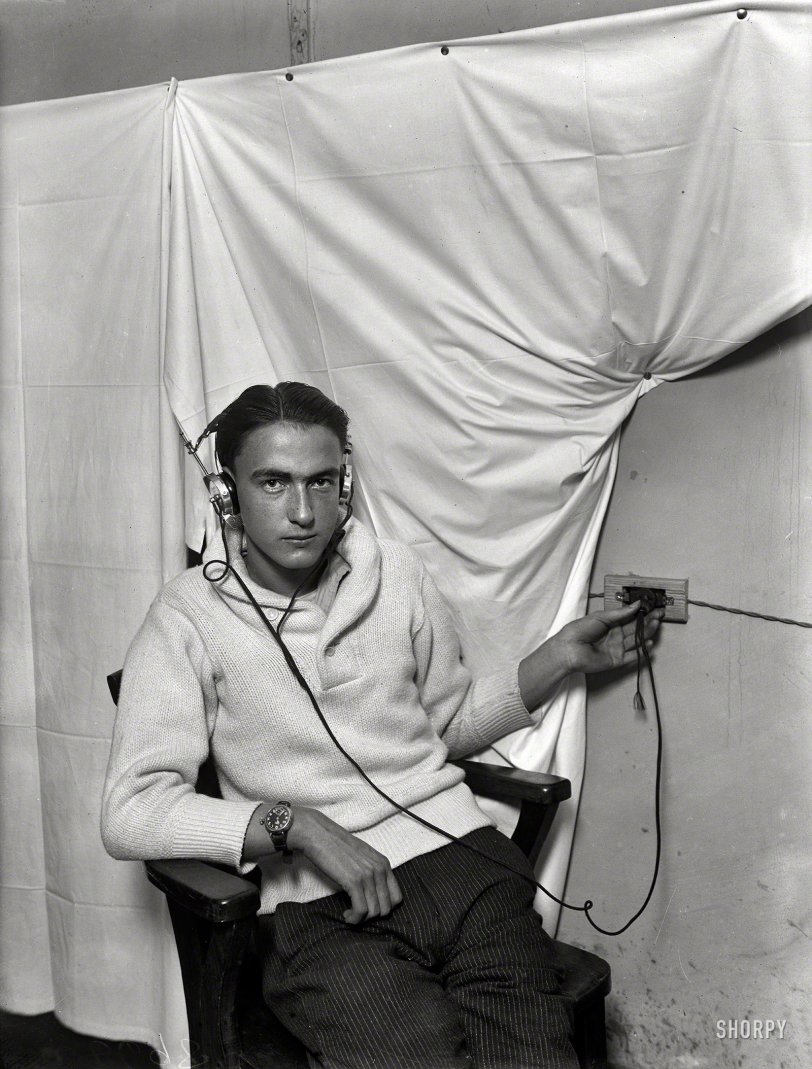
Washington, D.C., 1924. "By merely plugging the head telephone in the wall above the bed, each bedridden soldier in Walter Reed Hospital is provided with radio entertainment. A central radio system in the basement of this hospital feeds 900 head telephones scattered throughout the building." View full size.
- 8 comments
- 12687 reads
Just One of Those Things: 1926
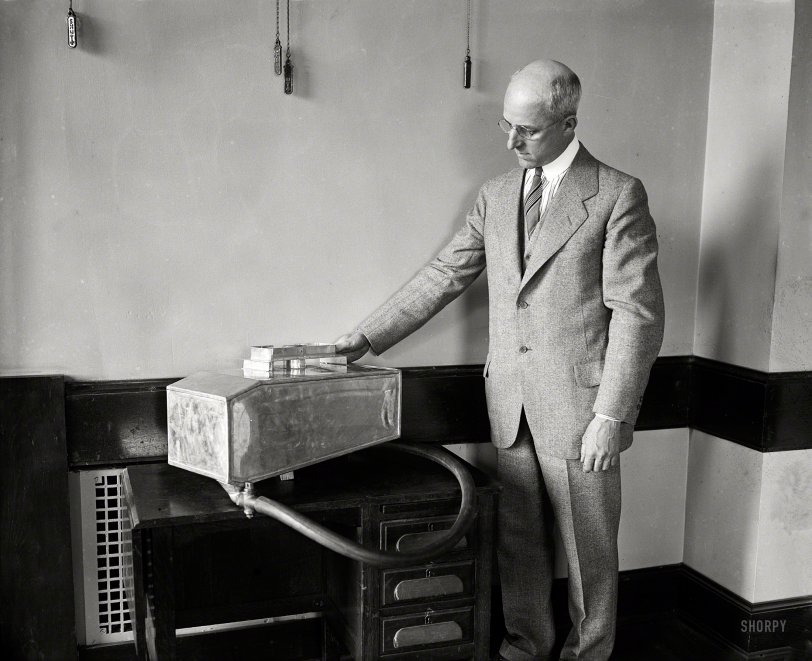
May 1926. "NO CAPTION." We can guess what you're thinking -- "Boy, been awhile since I saw one of those," or "They don't make 'em like that any more!" And you'd probably be right. Harris & Ewing glass negative. View full size.
- 23 comments
- 17463 reads
Just the Fax: 1927
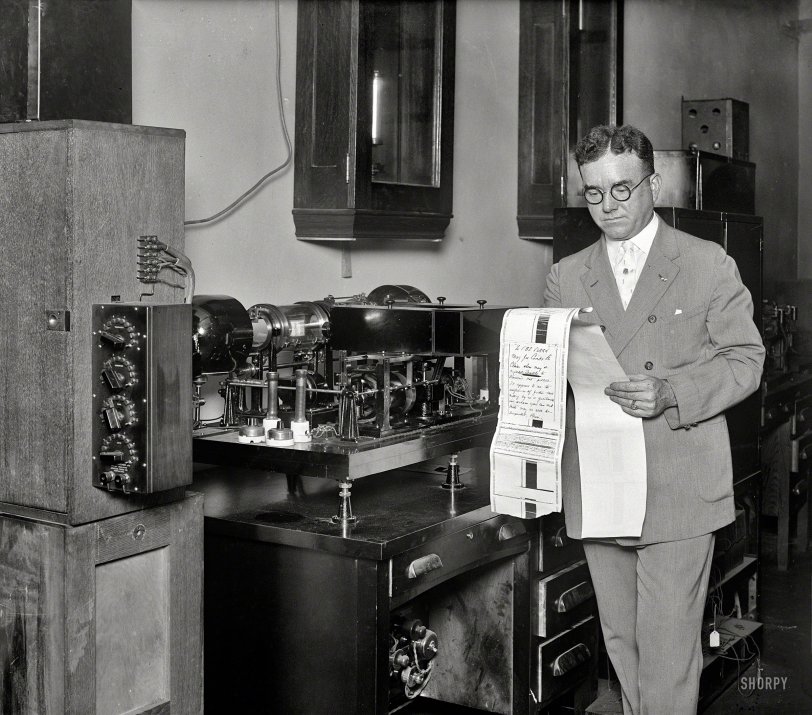
Washington, D.C., 1927. No caption on this Harris & Ewing glass plate of what seems to be facsimile equipment. View full size.
- 7 comments
- 14316 reads
Dish Network: 1931
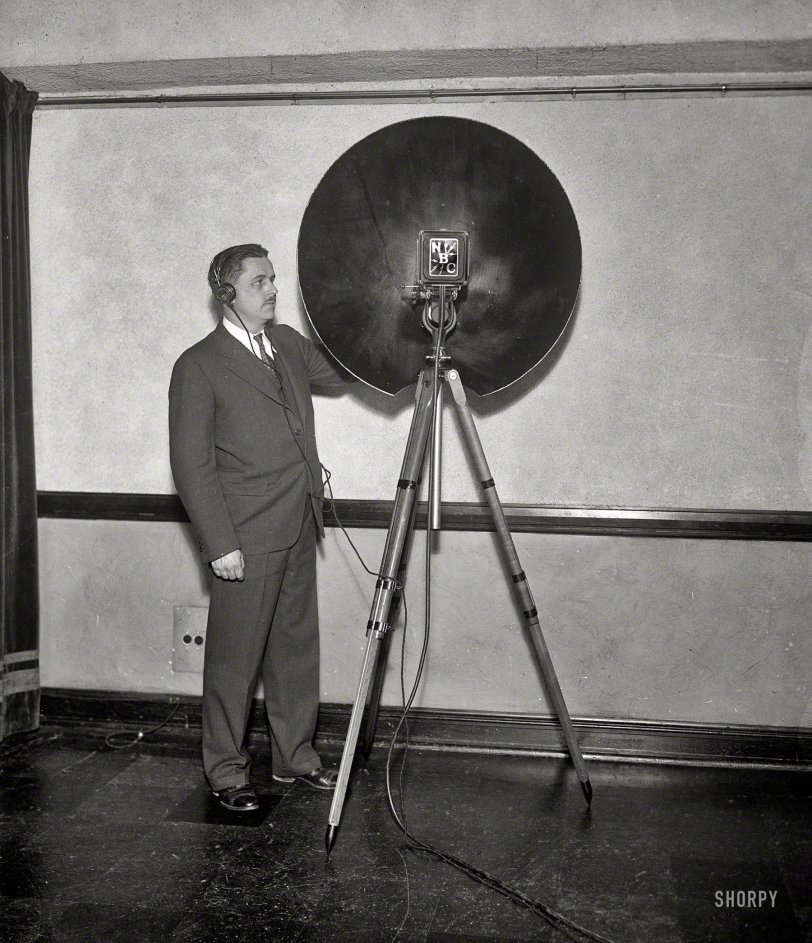
Washington, D.C., 1931. "National Broadcasting Co." A parabolic microphone, maybe, or high-tech salad bowl. Harris & Ewing glass negative. View full size.
- 4 comments
- 7869 reads
Flow Master: 1940
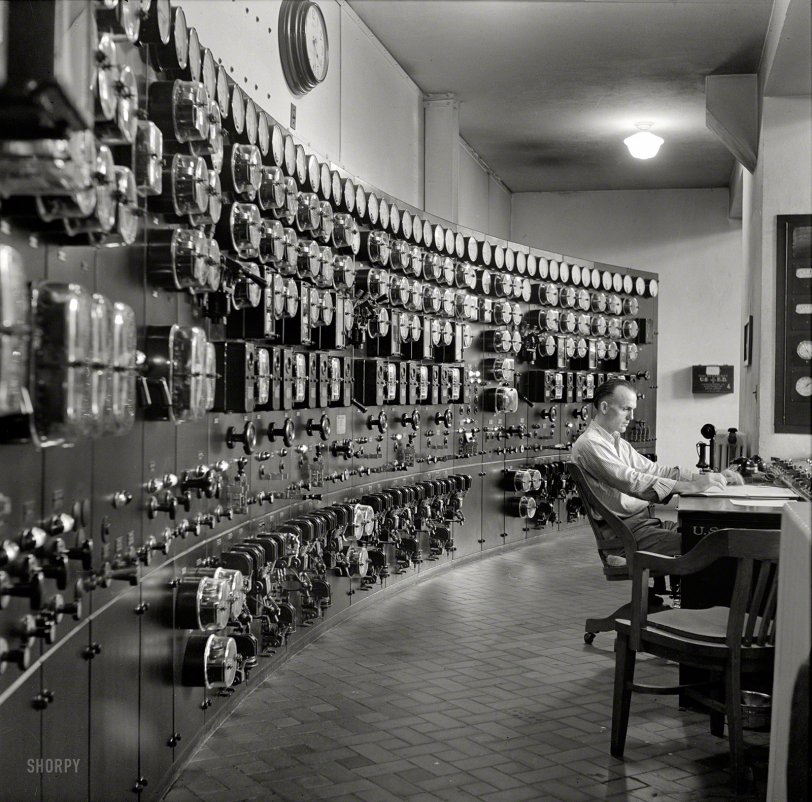
September 1940. "Control room, waterworks. Conduit Road, Washington, D.C." Photo by Edwin Rosskam, Office of War Information. View full size.
- 4 comments
- 14020 reads
KTLA-Bomb: 1952
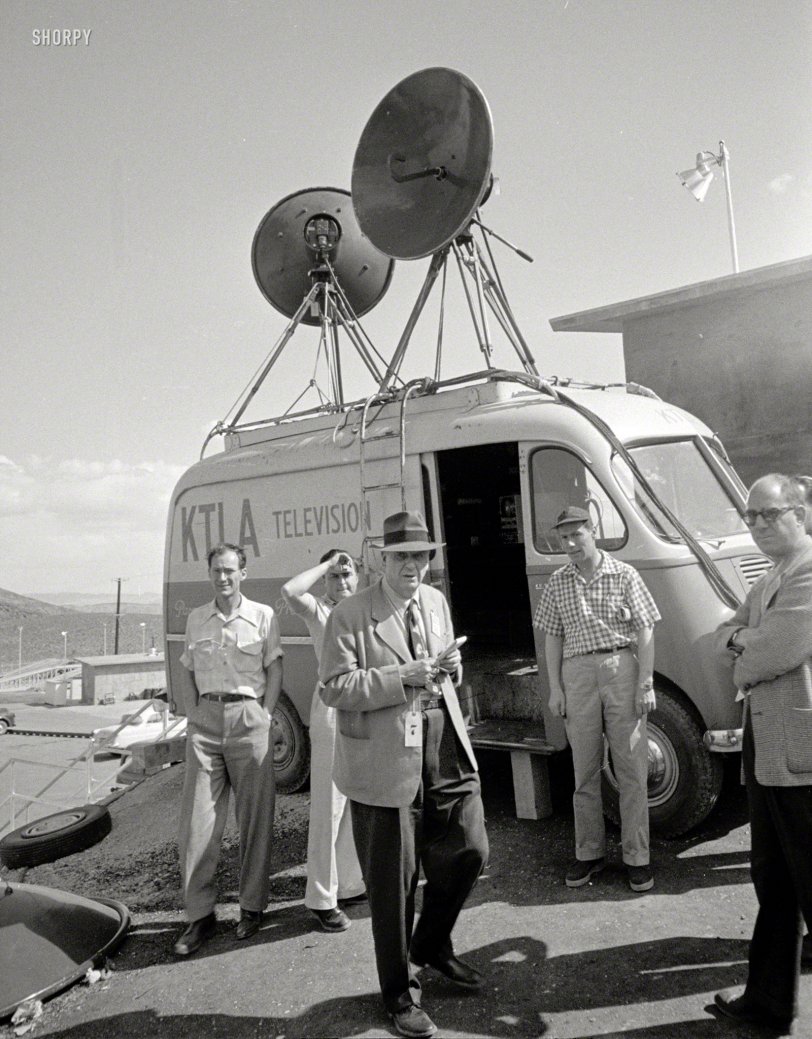
1952. "Journalists standing in front of a KTLA television truck at Camp Mercury Proving Grounds; present to record an atomic bomb detonation in the Nevada desert." Photo by Maurice Terrell for Look magazine. View full size.
- 13 comments
- 16953 reads
Radio Ward: 1924
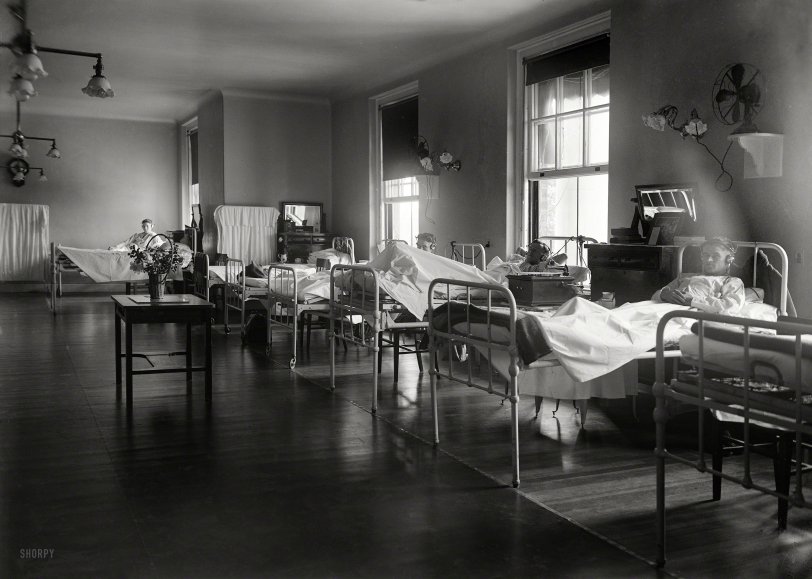
Washington, D.C., 1924. GI tunes: "Walter Reed Hospital. Scene in ward where the bed of every soldier is equipped with a set of radio earphones. This is the first hospital in the country to be completely equipped." View full size.
- 6 comments
- 11824 reads
Hello Up There: 1929
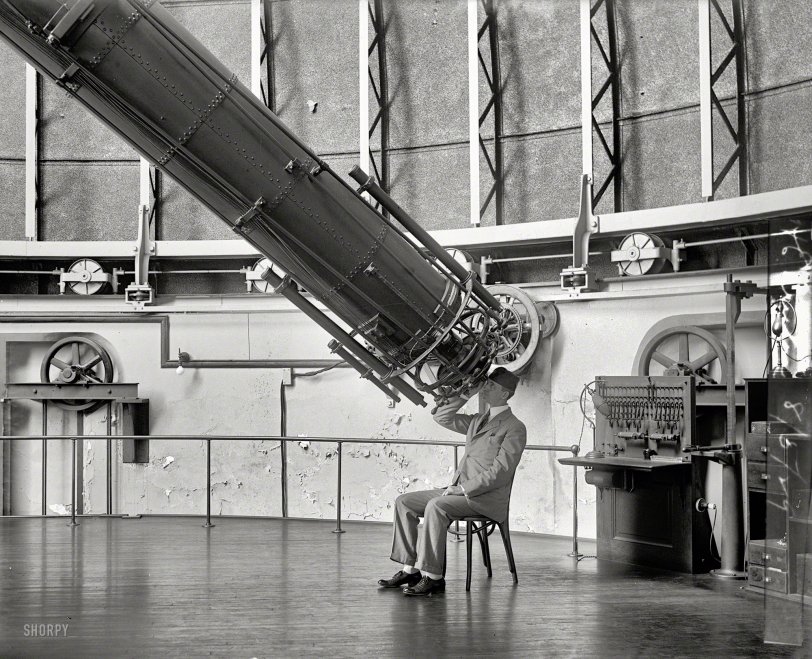
Washington, D.C. "Prof. H.E. Burton, 8/5/29." A Star Search matinee. National Photo Company Collection glass negative. View full size.
- 4 comments
- 17334 reads
Radio-Vision: 1925
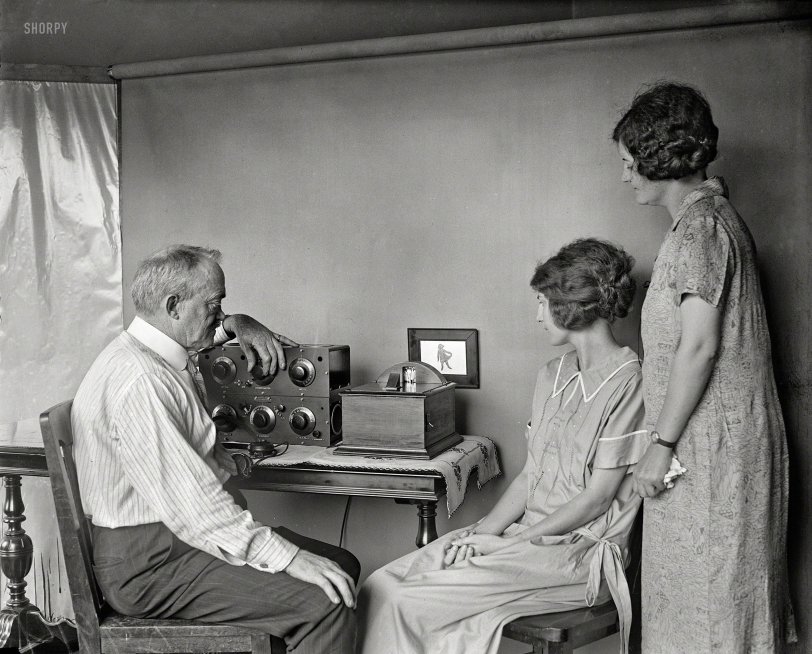
1925. "Motion pictures by radio are very near, predicts C. Francis Jenkins, who has designed this small radio-vision receiving set for use in the home. It is only a few inches square and is attached to the regular radio receiving set. A miniature motion picture screen is placed on the wall of your home, as shown in this photo. The first of this machine to be made. The photo was taken in Mr. Jenkins's laboratory at Washington, D.C." Harris & Ewing glass negative. View full size.
- 7 comments
- 16161 reads
In the Groove: 1940
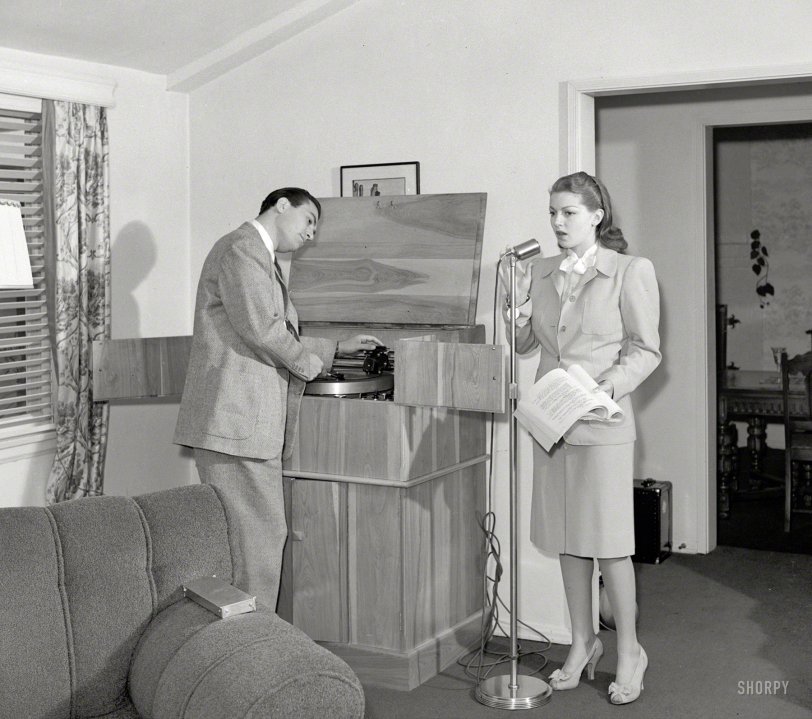
1940. "Lana Turner and Artie Shaw with audio recording system in their Beverly Hills Home." Possibly rehearsing a movie script. Photo by Earl Theisen for the Look magazine article "Lana Turner and Artie Shaw at Home." View full size.
- 12 comments
- 17619 reads
Airplane Mode: 1929
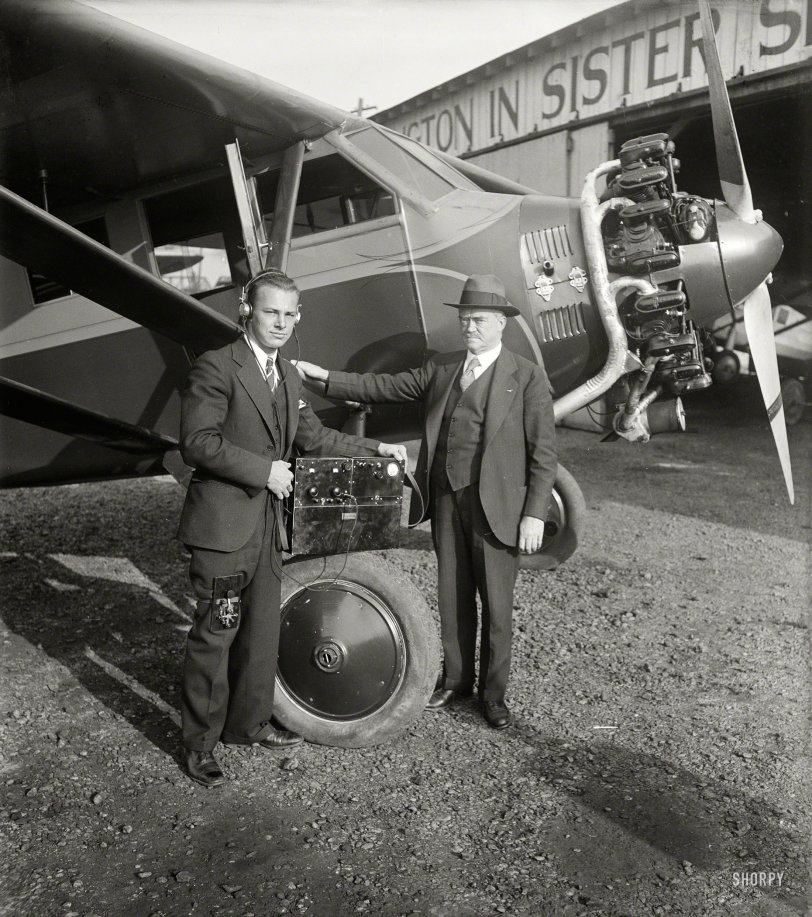
Dec. 5, 1929. Ignition interference from airplane engines on aircraft is largely a myth according to C. Francis Jenkins, Washington, D.C., inventor who has designed a radio receiving set which he says does not pick up noises from a flying power plant. In this photograph is shown Mr. Jenkins (right) and his laboratory assistant.
Video pioneer Francis Jenkins, seen here last week, and an anonymous protege who has a telegraph key strapped to his leg. By our reckoning this counts as early mobile texting. Harris & Ewing Collection glass negative. View full size.
- 8 comments
- 15737 reads























